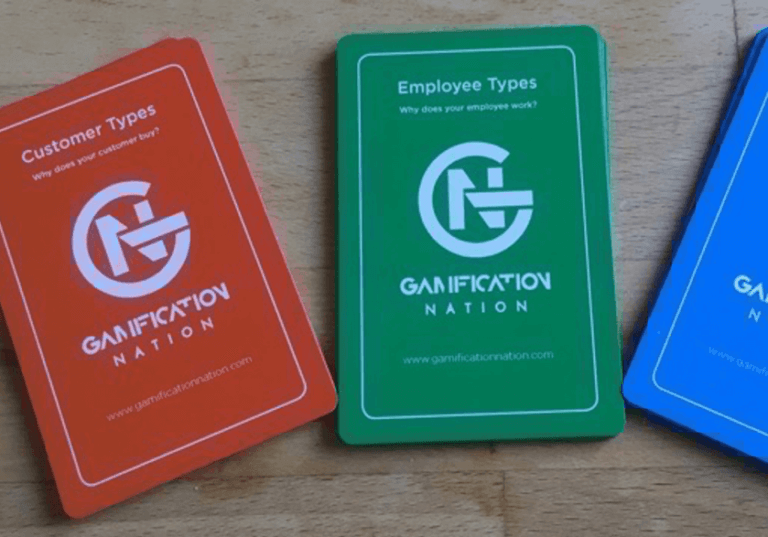Emotions are essential for us to make sense of our environment and the information thrown at us. People we associate with influence on how we process information and whether we even take it on board at all. A research study from the Aspen Institute goes into greater depth on how certain basics need to be met for our brain to learn and develop over time. They studied brain science and how various conditions need to be in place for effective learning to take place from early childhood to adulthood.
I would highly recommend you read it if you are involved in learning related gamification or anything to do with learning in general. It is written in understandable layman’s terms, so you don’t need to be a brain scientist to follow. It raises some great points, I will highlight the ones I took away from the report.
Learning is like tending to plants
One of the fun analogies in the study is how they see learning and brain development as similar to plants growing in different environments. The underlying brain science states that the brain doesn’t necessarily grow bigger and stronger nor creates more connections over time but rather that it learns to organise the connections if has made based on its environment, emotions, social situation, experiences and the type of problems encountered and solutions experienced. All of that mixed together is what creates the makeup and skills of a person.
So to go back to their plant analogy, a plant that finds itself in a well-nurtured and pruned garden will grow and adapt differently to a plant left to its own devices in wild nature, even where the soil type and climate still influence how it grows. In a similar fashion people from different backgrounds with different resources will learn and develop differently. Their individual situation also plays an influential role. I personally quite like how this analogy really makes the case for much more tailored approaches to learning but also for the environments that are ideal for the person as well as learning.
It’s not up to genes
Here is another interesting fact which many social tales will claim that some just have better genes than others and therefore make them smarter or not as the case may be. Well, the study quotes “The human genome project”, where it was discovered that humans actually have less specifically human defining genes than for example some plants. It means that most of our adaptive, creative nature aka the very essence of what makes us human is a learned behaviour which comes from our social and emotional environment, in other words, our family, friends, community, school and culture.
In the plant analogy, our genes are effectively the seeds a gardener may sow, meaning that all children have the necessary means to grow, learn and develop. The only exception made was children with specific genetic brain defects. However, it is the climate, the nurturing or not that makes it develop one way or another or not at all. Providing ideal learning opportunities in the environment and stimulation to explore them is what sets people apart in learning abilities over time and achievement of potential over time.
The study gives examples of how social experience such as baby hysterically crying and the situation in pre-teens, play an active role in the development of children. The brain changes over time and is influenced by social experiences, health, environment especially at times when it is most active typically times of transition such prenatal to early childhood, adolescence, parenthood and old age. Health and well being play a role in the holistic development not only of our body but also our brain.
Different life stages require different support to enable learning
The development of the brain and the development of thinking run in parallel and each supports the other. Through the study, they highlighted that different life stages correlated with different stages of development and also required specific supports for a person to thrive and optimally cope.
Infants:
Babies are like a blank canvas, their brains require extensive human interactions to develop. They come with instictive neural reflexes for sleep and food, body temperature regulation and the need to interact with their environment and people around them.
Most important for development:
- Stable routines (food, sleep, etc)
- Cultural routines (songs, games)
- Stable relationships (emotionally healthy)
- Nutrition
- Physical care
- Lots of exposure to language
- Comfort and safety
- Communication and interactions to stimulate language development and sense-making
Early childhood:
In this period the brain develops its sensory and motor abilities together with language, spatial and visual awareness. It comes at the same time as toddlers starting to make goal-directed moves. Sensory and motor regions are becoming more efficient and interconnected.
Most important for development:
- encouraging posture and movement for physical development
- social interactions to learn about sharing, talking, listening
- active play, active participation in daily rituals
- stories, games, drawing
- songs, dance, music
- support and encouragement
Middle to late childhood:
Middle childhood builds on the knowledge and experiences learned in early childhood and children start to express their knowledge and thoughts in all senses physical, cognitive, social, emotional, world and self. Learning of patterns and associating beliefs form people they know from home, school and community. All senses are at play to generate associations and connections between experience and concepts.
Most important for development:
- Social relationships
- Emotional Experiences
- Stories
- Mathematical and scientific reasoning
- Formalising ideas through language and art
- Projects that allow to set goals, seek answers, evaluate evidence, and draw conclusions
- Collaboration
- Expressing of feelings, empathy etc.
Early Middle Adolescence:
For the brain, this period is the biggest time for development after infancy. It is when the most growth takes place on a social, cognitive and emotional level based on experiences, it also increases the vulnerability for anxiety and depression. With hormones also going through changes in puberty there is a heightened sensitivity to social signals, social hierarchy, reward, reputation and physical appearance. The brain is developing the capacity for emotional regulation, long-term planning and abstract thinking, with that also come potential emotional mood swings and risk-taking.
Most important for development:
- opportunities to explore and deepen personal interest
- technical skills
- Activities designed to build social connections, community involvement,
- Activities encouraging perspective and meaning
- Physical activity, social connection, nutrition, and sleep to balance out more emotional and cognitive changes
- Investigations that allow for critical thinking and problem-solving skills,
- Debating ideas and reflecting on what they are learning,
- Start ambitious projects that interest them,
- receive feedback they can act on to improve their work
- Whilst in a supportive environment with adults that know them and can act as mentors
Late adolescence-early adulthood
In late adolescence, the brain starts to cut out neural connections for it to work more efficiently, up till then connections would have been increasing. Which connections remain is determined by a person’s thought patterns and engagement with their environment, including by education and social relationships.
Most important for development:
- Opportunities to engage deeply with scholarly ideas,
- to apply their emerging skills to real-world problems,
- to build strong, appropriate peer and adult relationships for identity development and for making decisions about committed relationships, lifestyle, and careers
- opportunities to investigate and apply their learning in real-world contexts through projects and internships
- constructive feedback that allows them to develop their thinking and to tackle ever more advanced problems.
- follow their interests and passions in choosing topics and approaches,
- reflecting on their own strategies so they can guide their own learning over time
- engage in personally enjoyable forms of physical activity
Middle to later adulthood
Although the brain is probably fully matured, it will continue to go through age-related changes based on emotional, educational, social and environmental experiences. Physical and mental activities and strong social connections help the adult brain to function in a healthy way, the biggest disruptors are chronic stress, long term sleep deprivation and nutritional deficiencies.
Most important for development:
- Education connected to learners’ goals which provides them with new experiences that encompass problem-solving in real-life contexts
- collaboration with colleagues, typically in job-embedded contexts;
- the use of models and modelling of effective practice;
- provision of coaching and expert support;
- feedback and reflection
Four stages of experiential learning for adults:
- engaging in concrete experience;
- observing and reflecting, often in discussion with peers;
- forming insights and generalisations;
- testing implications of new concepts in new situations
What does this tell us for learning and gamification?
I think it is fascinating to read research like this and learn more about we develop as humans. For me, each stage in life presents an opportunity to add different education methods to the mix. In fact, all of them can involve play, games and gamification. In the early years, it should be more free-flowing and less goal driven, but at some point, we will switch to mainly goal-driven activities. On the flipside, it also raises the question of whether we lose inputs if we stop free-flowing play and only aim to build on top of existing knowledge and maybe that is just purely philosophical.
From a gamification perspective, the fragile ages where rewards may actually be damaging more than helpful could be early infancy and puberty/adolescence. I am sure most of us remember an embarrassing moment or two from our teenage years. At all stages, feedback is relevant from young to old. I think that is what gamification really can bring to the table. Stories and safe environments are important for a large proportion of our learning life and as we grow a bit older the context and relation to real life is more important than fiction.
For me in the learning gamification space, I find this type of translation of academic pieces into valuable workable advice for practical application essential.
https://gamificationnation.com/is-experiencing-consequences-the-key-to-gamification-design-for-learning/



